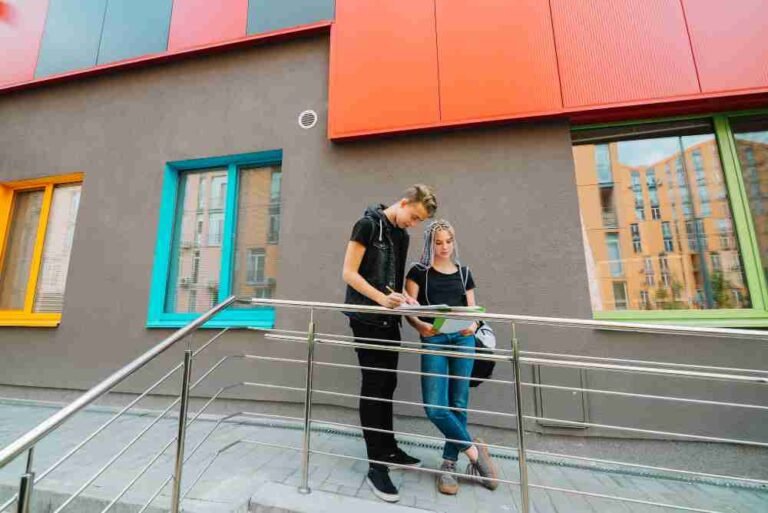Have you ever wondered why some homes captivate you at first sight, while others impress only once you step inside? This classic design dilemma—interior vs. exterior—shapes how we experience, value, and care for our living spaces. Whether you’re a homeowner planning renovations, a designer crafting unique environments, or a builder focused on quality, understanding the relationship between interior and exterior spaces is crucial. These two aspects are distinct yet deeply connected, each playing a vital role in the comfort, beauty, and value of a property.
The terms “interior” and “exterior” might seem straightforward, but they represent much more than inside and outside. The interior encompasses all that’s within the walls—living rooms, kitchens, bedrooms, and their décor—creating the backdrop for daily life. The exterior, on the other hand, includes everything visible from the street: the facade, landscaping, roof, and driveway, forming the crucial first impression and protecting your home from the elements.
Why does this distinction matter so much? Both sides require unique planning, materials, and upkeep, yet together they define a property’s character and market appeal. Neglecting either can lead to discomfort, maintenance headaches, or missed opportunities for increased value. In this comprehensive guide, we’ll explore the essential differences between interior vs. exterior, their impact on property value, trending styles for 2025, practical tips for balancing improvements, and common mistakes to avoid.
By the end, you’ll understand not just how to distinguish between interior and exterior spaces, but how to make them work together—creating a home that’s both welcoming and enduring. Let’s dive into the dynamic world of interior vs. exterior and discover how to enhance every aspect of your property.
Defining Interior vs. Exterior
What is considered “Interior” in homes and buildings? At its core, the interior refers to everything inside the structural envelope. This includes all the rooms, hallways, ceilings, walls, flooring, doors, and even the fixtures and finishes. The interior space is where people live, work, play, and rest. It’s crafted for comfort, function, and personal expression—think of cozy living rooms, well-equipped kitchens, and tranquil bedrooms. Elements like lighting, furniture, paint colors, and art all help define a home’s interior personality.
The “Exterior” refers to everything outside the envelope—the shell that faces the street and the world beyond. This includes the facade, siding, windows, roof, entryways, driveways, garages, landscaping, outdoor lighting, fences, and patios. Exteriors must be tough, weather-resistant, and visually appealing, offering both protection and curb appeal.
Functional purpose:
- Interiors nurture comfort, privacy, and daily activities, with design decisions focused on aesthetics, ergonomics, and efficiency.
- Exteriors shield the building from wind, rain, sun, and temperature extremes while inviting guests and reflecting the owner’s taste.
Examples of interior elements:
- Walls, ceilings, floors, cabinetry, lighting, art, appliances, furniture
Examples of exterior elements:
- Roof shingles, brick or siding, gutters, windows, doors, porches, landscaping, driveway materials
Where does the interior become exterior? The boundary is often the building’s envelope—doors and windows marking the transition. Garages, covered patios, and screened porches can blur this line, serving as hybrid spaces that require careful material selection and design.
Understanding this distinction is foundational, as both the interior and exterior demand different approaches to design, maintenance, and upgrades.
Key Differences Between Interior and Exterior
Materials Used: Interior vs. Exterior
Materials are the backbone of both interiors and exteriors, but the requirements differ sharply.
Interior materials:
- Drywall, plaster, paint, hardwood, tile, carpet, wallpaper, interior-grade woods
- Chosen for comfort, aesthetics, and tactile pleasure
- Less need for weather resistance, but must be durable and easy to maintain
Exterior materials:
- Brick, stone, stucco, vinyl siding, fiber-cement, shingles, metal, exterior-grade woods
- Built for durability, UV resistance, moisture protection, and insulation
- Must withstand wind, rain, snow, freeze-thaw cycles, and sun exposure
Environmental Exposure and Protection
Interiors are shielded from the elements. Windows and doors control temperature, moisture, and light. Insulation, HVAC systems, and vapor barriers keep the environment stable and comfortable.
Exteriors face constant attack from nature. Paint and sealants prevent rot and rust. Roofs deflect water. Siding and windows must repel wind and extreme temperatures. Proper exterior maintenance is essential to protect the interior from leaks, drafts, and pests.
Aesthetic Considerations: Interior Design vs. Exterior Design
Interior design focuses on maximizing comfort, function, and beauty within the home. This includes color schemes, lighting plans, furniture layouts, and the integration of technology or art.
Exterior design is about curb appeal and harmony with the neighborhood or landscape. Landscaping, architectural details, and color choices all shape first impressions. Exterior design must also account for regulations, climate, and energy efficiency.
Maintenance & Durability
Interior maintenance:
- Regular cleaning, painting, floor refinishing, HVAC servicing
- Less risk of weather damage, but vulnerable to spills, scratches, and wear
Exterior maintenance:
- Painting, power washing, roof inspection, gutter cleaning, landscaping
- Must address weathering, fading, cracking, and pest control
Functional Requirements
Interiors:
- Must support daily living—cooking, sleeping, relaxing, working
- Require effective lighting, ventilation, storage, and accessibility
Exteriors:
- Must protect, insulate, and drain water away from the structure
- Should offer security, privacy, and outdoor living opportunities
The key takeaway? While interiors and exteriors are deeply linked, they demand specialized strategies and materials to perform their distinct roles.
Importance of Considering Both Interior and Exterior in Property Value
The interior vs. exterior balance has a direct impact on your property’s worth and marketability.
How does each influence value?
- Curb appeal can sway first impressions and buyer interest. A well-maintained exterior signals care and pride of ownership.
- Interior aesthetics and function can clinch the deal once buyers walk through the door, making them envision a life within those walls.
Buyer decisions:
- Studies show that buyers often decide within seconds if they’re interested in a property, based on the exterior.
- However, if the interior doesn’t live up to expectations, even the prettiest facade can’t compensate.
Renovations and ROI:
- Exterior upgrades like new siding, roofing, or landscaping can yield significant returns—often more than interior remodeling in terms of resale value.
- Interior upgrades (kitchen and bathroom remodels) also offer high ROI, especially if the layout and finishes are modern and functional.
Balanced focus:
- Properties with coordinated, well-maintained interiors and exteriors command higher prices and sell faster.
- Case studies show homes with both updated curb appeal and refreshed interiors can increase in value by 10-20% or more.
Pro tip:
Don’t neglect one for the other. A stunning kitchen won’t shine if the roof leaks, and gorgeous landscaping won’t mask dated interiors.
Interior vs. Exterior Design Trends in 2025
Interior Design Trends
Minimalism and clean lines:
Open layouts, neutral palettes, and clutter-free spaces continue to dominate. Smart storage and multi-purpose furniture help maximize smaller footprints.
Smart home tech integration:
From voice-activated lighting to climate control and security, technology is seamlessly blending into interior environments.
Biophilic design:
Incorporating natural elements—like living walls, large windows, and organic materials—brings the outdoors in, promoting wellness.
Personalization:
Bold accent walls, unique art, and customized fixtures allow homeowners to express their individuality.
Exterior Design Trends
Sustainable landscaping:
Native plants, drought-tolerant gardens, and permeable paving reduce water use and maintenance.
Eco-friendly materials:
Recycled siding, solar roofing, and energy-efficient windows are top choices for new builds and renovations.
Outdoor living spaces:
Covered patios, outdoor kitchens, and fire features extend the living area beyond the walls, making exteriors as functional as interiors.
Contrasting textures and colors:
Mixing wood, stone, and metal for facades creates visual interest and modern curb appeal.
Interior vs. Exterior Influence
How trends cross boundaries:
- Interior color palettes often inspire exterior paint choices, and vice versa.
- Modern open-plan interiors flow seamlessly onto patios or decks, blurring the line between inside and out.
- Sustainable choices impact both—energy-efficient windows benefit interiors, while green roofs enhance exteriors.
Harmonizing the look:
Designers are prioritizing holistic approaches, ensuring that interior style and exterior architecture complement each other for a cohesive overall impression.
Practical Tips for Balancing Interior vs. Exterior Projects
Budget Planning
Assess your needs:
- Start with a property assessment to determine which area—interior or exterior—needs the most attention.
- Allocate funds for both, but prioritize urgent repairs (like a leaking roof or faulty wiring).
Project Prioritization
Consider property age and climate:
- Older homes may need exterior updates to improve insulation or weather resistance.
- In harsh climates, invest in durable siding and roofing before interior upgrades.
Coordinating Color Schemes and Styles
Create flow:
- Use a common color palette or material (like wood accents) to tie indoor and outdoor spaces together.
- Consider sightlines—what’s visible through windows or doors—and aim for harmony.
Utilizing Professionals
When to hire help:
- Interior designers can maximize space, function, and aesthetics inside.
- Exterior contractors and landscapers bring expertise in weatherproofing, curb appeal, and outdoor living.
Sustainable Choices
Go green inside and out:
- Choose recycled or low-VOC materials for interiors.
- Opt for permeable pavers, native plants, and energy-efficient lighting for exteriors.
Pro tip:
Plan projects seasonally—landscaping in spring, exterior painting in summer, and interior updates during colder months for efficiency and cost savings.
Common Mistakes When Overlooking Interior or Exterior
Neglecting Exterior Maintenance
Leads to interior problems:
Leaks, drafts, and pest infestations can result from ignored gutters, damaged roofs, or cracked siding.
Over-Focusing on Interior
Curb appeal suffers:
A beautiful interior won’t entice buyers or guests if the exterior is outdated or unkempt.
Avoiding Mismatched Styles
Disjointed design:
A modern interior with a dated exterior (or vice versa) creates visual confusion and reduces property value.
Safety and Security Oversight
Both matter:
Neglecting exterior lighting or strong locks can compromise safety, while ignoring smoke detectors or ventilation inside can endanger occupants.
Pro tip:
Review both areas annually for maintenance, updates, and security improvements.
Key Takeaways
- Interior vs. Exterior is more than a design debate—it’s about creating a balanced, beautiful, and functional property.
- Interior spaces focus on comfort and daily living, while exteriors provide protection, curb appeal, and a welcoming entry.
- Materials, maintenance, and design priorities differ but must work together.
- Both areas impact property value and marketability.
- 2025 trends show growing harmony, with sustainability and technology influencing both sides.
- Avoid common pitfalls by maintaining, updating, and coordinating interior and exterior spaces for maximum benefit.
Conclusion
The interior vs. exterior dynamic shapes every property’s personality, performance, and value. By understanding the unique roles and requirements of each, homeowners, designers, and builders can make informed decisions that enhance both comfort and curb appeal. Balancing investment and attention between interior and exterior spaces ensures a home that’s not only beautiful, but also resilient, efficient, and inviting.
If you’re ready to maximize your property’s potential, start with a thorough assessment. Consult professionals for specialized projects, and always plan with an eye toward harmony and long-term value. Whether you’re refreshing a single room or reimagining your entire property, remember: the best homes are those where interior and exterior design work together in perfect balance.
Home valleys.com

